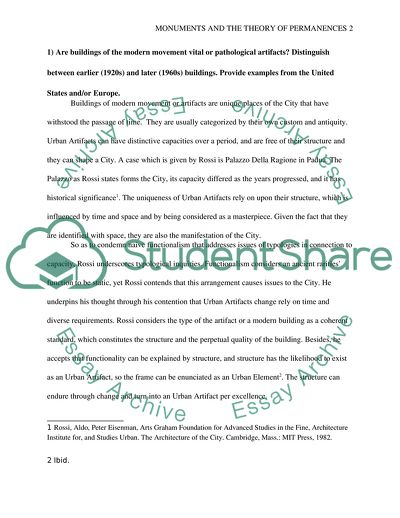Cite this document
(Monuments and Theory of Permanence by Aldo Rossi Assignment Example | Topics and Well Written Essays - 1250 words, n.d.)
Monuments and Theory of Permanence by Aldo Rossi Assignment Example | Topics and Well Written Essays - 1250 words. https://studentshare.org/architecture/1875785-monuments-and-the-theory-of-permanencesquot-by-aldo-rossi
Monuments and Theory of Permanence by Aldo Rossi Assignment Example | Topics and Well Written Essays - 1250 words. https://studentshare.org/architecture/1875785-monuments-and-the-theory-of-permanencesquot-by-aldo-rossi
(Monuments and Theory of Permanence by Aldo Rossi Assignment Example | Topics and Well Written Essays - 1250 Words)
Monuments and Theory of Permanence by Aldo Rossi Assignment Example | Topics and Well Written Essays - 1250 Words. https://studentshare.org/architecture/1875785-monuments-and-the-theory-of-permanencesquot-by-aldo-rossi.
Monuments and Theory of Permanence by Aldo Rossi Assignment Example | Topics and Well Written Essays - 1250 Words. https://studentshare.org/architecture/1875785-monuments-and-the-theory-of-permanencesquot-by-aldo-rossi.
“Monuments and Theory of Permanence by Aldo Rossi Assignment Example | Topics and Well Written Essays - 1250 Words”. https://studentshare.org/architecture/1875785-monuments-and-the-theory-of-permanencesquot-by-aldo-rossi.


